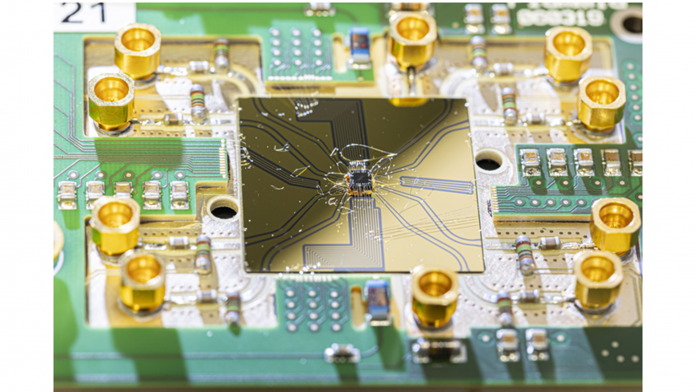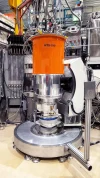Experts from Forschungszentrum Jülich and RWTH Aachen University have developed a “quantum bus” that may enhance the capabilities of quantum computers, making them scalable.
For quantum computers to be effective in practical applications, they require millions of quantum bits (qubits), which limits their scalability. This is because the qubits have to be situated extremely close to each other on the chip to couple them together – a significant problem with the technology – that the team may have solved.
Using their quantum bus, the researchers have devised a way to transfer electrons, which carry quantum information, over several micrometres on a quantum chip. Their innovation could be the essential component to facilitate the leap to millions of qubits.
Current limitations of quantum computers
Quantum computers have the potential to surpass the capabilities of conventional computers for various tasks significantly. However, obstacles persist with the technology, as many applications require quantum processors with millions of quantum bits, with current prototypes only able to muster up a few.
Dr Lars Schreiber, from the JARA Institute for Quantum Information at Forschungszentrum Jülich and RWTH Aachen University, explained: “Currently, each individual qubit is connected via several signal lines to control units about the size of a cupboard. That still works for a few qubits. But it no longer makes sense if you want to put millions of qubits on the chip. Because that’s necessary for quantum error correction.”
The number of signal lines eventually becomes a bottleneck as they take up too much space compared to the size of tiny qubits. Moreover, a quantum chip cannot have millions of inputs and outputs; a classical chip only contains about 2000.
To overcome this, the team is researching how to integrate parts of the control electronics directly on the chip using semiconductor spin qubits made of silicon and germanium. This type of qubit is extremely small, and the manufacturing process is similar to that of traditional silicon processors, although some barriers remain.
Schreiber said: “The natural entanglement that is caused by the proximity of the particles alone is limited to a very small range, about 100 nanometres. To couple the qubits, they currently have to be placed very close to each other. There is simply no space for additional control electronics that we would like to install there.”
Developing a quantum bus
For the last five years, the team has been developing a way to set the qubits apart, devising a quantum bus that helps exchange quantum information between the qubits over greater distances.
Professor Hendrik Bluhm, IQI Institute Director, said: “About 10 micrometres have to be bridged from one qubit to the next. According to theory, millions of qubits can be realised with such an architecture.”
The team’s technology successfully transported an electron 5000 times over a distance of 560 nanometres without significant errors. The benefit of this method is that the electrons are driven by four simple control signals, which unlike previous efforts, do not become more complex over long distances. This removes the need for additional control electronics that would take up too much space or would not be able to be integrated onto the chip at all.
Schreiber said: “Until now, people have tried to steer the electrons specifically around individual disturbances on their path. Or they created a series of so-called quantum dots and let the electrons hop from one of these dots to another. Both approaches require precise signal adjustment, which results in too complex control electronics.
“In contrast, we generate a potential wave on which the electrons surf over various sources of interference. A few control signals are sufficient for such a uniform wave; four sinusoidal pulses are all it takes.”
The quantum bus provides the path toward scalable quantum computers, and the researchers are now working to show that the qubit information encoded in the electron spin is not lost during the transportation process.









